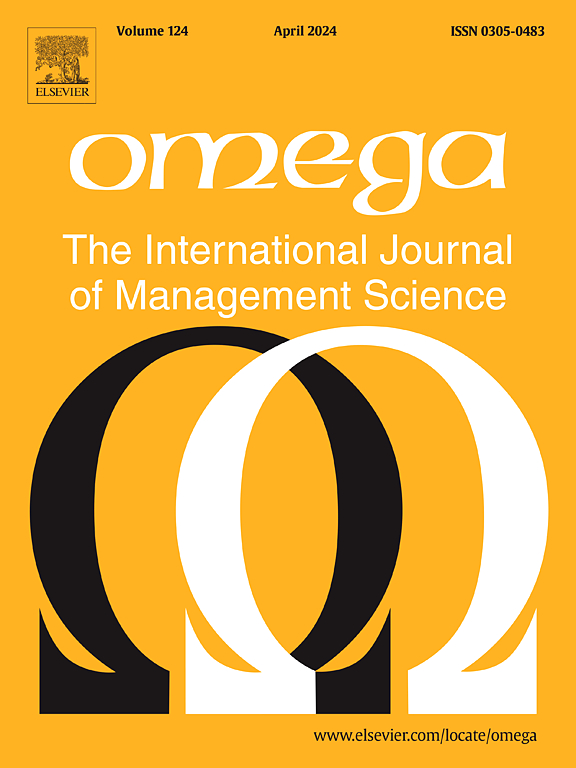Product bundling strategy and pricing for co-livestreaming rooms considering consumer subscription
IF 7.2
2区 管理学
Q1 MANAGEMENT
Omega-international Journal of Management Science
Pub Date : 2025-06-18
DOI:10.1016/j.omega.2025.103379
引用次数: 0
Abstract
Livestreaming e-commerce has recently emerged as a highly effective channel for manufacturers and retailers. In co-livestreaming, two streamers from different rooms collaborate to host an event and individually promote products in their respective rooms. Considering consumer subscription type and valuation discount, we explore three co-livestreaming sales strategies: pure component (PC), mixed bundling (MB), and pure bundling (PB), focusing on pricing decisions and sales strategy choices for independent products. Our findings indicate that co-livestreaming does not offer significant advantages over solo-livestreaming when there is sufficient traffic; however, co-livestreaming becomes beneficial when streamers have similar or identical audience types. Regarding consumer loyalty, the room with more loyal subscribers should promote high-value products. When two products have comparable values, PB strategy is preferable with a low proportion of co-subscribers and not too small valuation discount; otherwise, MB is preferred. In addition, both valuation discounts and product value difference significantly influence the choice of co-livestreaming sales strategies. Furthermore, we extend our models to examine co-livestreaming cases involving substitute and complementary products and compare the optimal bundling strategies with those for independent products. Finally, we propose a product assignment and a profit distribution method within co-livestreaming scenarios.
考虑到消费者订阅,联合直播房间的产品捆绑策略和定价
直播电子商务最近成为制造商和零售商的一个非常有效的渠道。在联合直播中,来自不同房间的两名主播合作举办活动,并在各自的房间单独推广产品。考虑到消费者订阅类型和估值折扣,我们探讨了三种联合直播销售策略:纯组件(PC),混合捆绑(MB)和纯捆绑(PB),重点关注独立产品的定价决策和销售策略选择。我们的研究结果表明,当有足够的流量时,联合直播并不比单独直播具有显着优势;然而,当主播拥有相似或相同的观众类型时,联合直播就变得有益了。在消费者忠诚度方面,拥有更多忠实用户的房间应该推广高价值的产品。当两种产品价值相当时,共同订户比例较低且估值折扣不太小的情况下,PB策略更可取;否则,优先选择MB。此外,估值折扣和产品价值差异对直播销售策略的选择都有显著影响。此外,我们扩展了我们的模型,以检查涉及替代和互补产品的联合直播案例,并将最佳捆绑策略与独立产品的捆绑策略进行比较。最后,我们提出了一种协同直播场景下的产品分配和利润分配方法。
本文章由计算机程序翻译,如有差异,请以英文原文为准。
求助全文
约1分钟内获得全文
求助全文
来源期刊

Omega-international Journal of Management Science
管理科学-运筹学与管理科学
CiteScore
13.80
自引率
11.60%
发文量
130
审稿时长
56 days
期刊介绍:
Omega reports on developments in management, including the latest research results and applications. Original contributions and review articles describe the state of the art in specific fields or functions of management, while there are shorter critical assessments of particular management techniques. Other features of the journal are the "Memoranda" section for short communications and "Feedback", a correspondence column. Omega is both stimulating reading and an important source for practising managers, specialists in management services, operational research workers and management scientists, management consultants, academics, students and research personnel throughout the world. The material published is of high quality and relevance, written in a manner which makes it accessible to all of this wide-ranging readership. Preference will be given to papers with implications to the practice of management. Submissions of purely theoretical papers are discouraged. The review of material for publication in the journal reflects this aim.
 求助内容:
求助内容: 应助结果提醒方式:
应助结果提醒方式:


